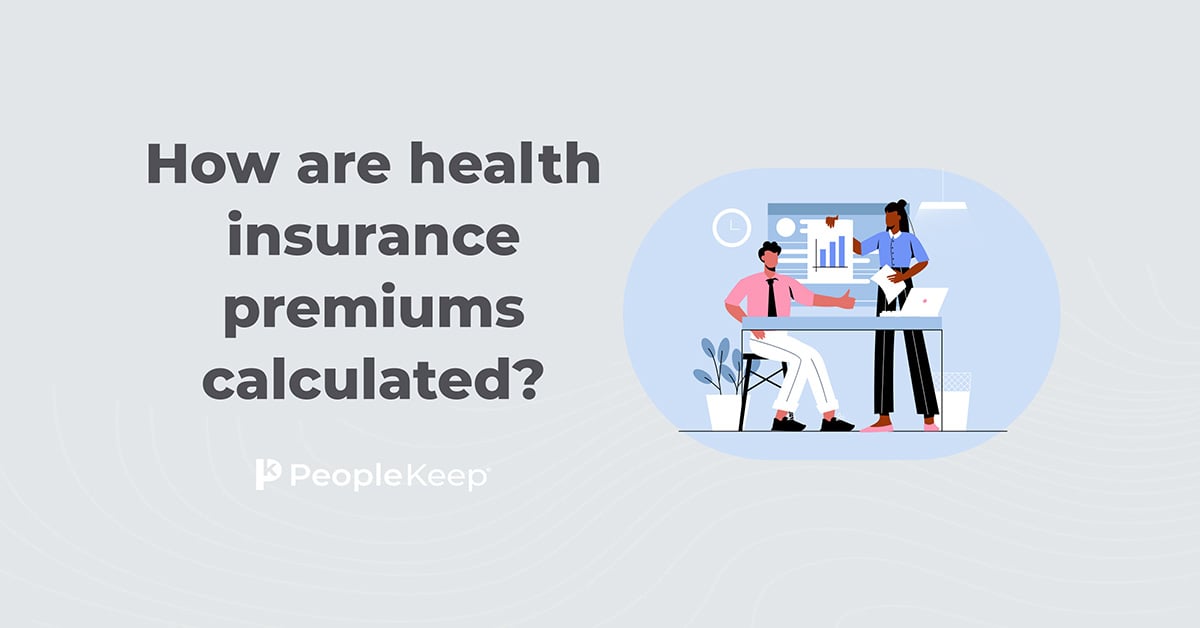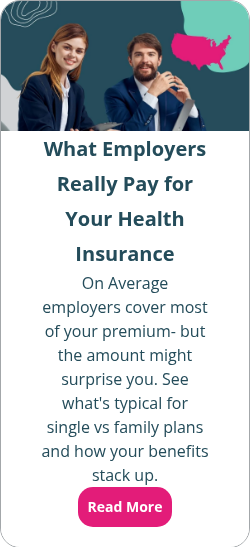What is a qualified health plan (QHP)?
By Elizabeth Walker on May 2, 2025 at 10:15 AM
Choosing an individual health plan that will meet all your medical needs can be challenging if it's your first time shopping for coverage. Luckily, all health plans on the federal or state-based marketplaces cover basic medical care services. These plans are known as qualified health plans (QHPs).
QHPs are health insurance policies that comply with Affordable Care Act (ACA) requirements. These plans must meet specific certification standards to be on the public individual market. They must also cover ten essential health benefits that most people rely on.
The article below will explain qualified plans in detail so you can choose the right plan for you and your family.
In this blog post, you’ll learn:
- What makes a health insurance policy a qualified health plan under the ACA.
- How the ACA categorizes qualified health plans and what each level means for out-of-pocket costs.
- How to enroll in a qualified health plan and who can buy one through a public health exchange.
What is a qualified health plan?
A qualified plan is a health insurance plan that meets specific ACA requirements. The Health Insurance Marketplace certifies these plans to ensure they provide minimum essential coverage (MEC). Some coverage options include benefits beyond the essentials, such as dental coverage.
According to the ACA, a QHP sold on the Marketplaces must follow these basic rules:
- The plan must cover the ten essential health benefits, such as:
- Primary care
- Mental health services
- Behavioral health treatment
- Prescription drugs
- Habilitative services
- It must follow federally set annual limits on cost-sharing amounts, such as deductibles, copays, and out-of-pocket maximums.
- It must prohibit lifetime benefit limits.
- It should include a reasonable number of in-network providers within the state where the qualified individual bought the plan.
- The plan can’t discriminate on the basis of race, national origin, age, gender identity, sexual orientation, or other factors.
- Plans must meet other requirements of the ACA.
Public health exchanges, such as the federal Health Insurance Marketplace and state-based marketplaces, certify QHPs annually. The certification process occurs before the Open Enrollment Period, which begins in November each year.
Insurers with plans on HealthCare.gov submit applications from April through June on the Centers for Medicare & Medicaid Services’ (CMS) qualified health plan website1. CMS finalizes the plans' certification by October. State exchanges often have different timelines.
How are qualified health plans categorized?
The public exchanges organize QHPs by metallic tier levels: bronze, silver, gold, and platinum. The tiers make it easier for qualified individuals to compare plans with similar health insurance premiums and out-of-pocket medical costs. All plan types sold on the public health exchanges, regardless of their metal level, are QHPs.
Insurers assign Marketplace plans to a metal level based on actuarial value. All QHPs cover the essential health benefits and other basic services. But a lower metal level policy, such as a bronze plan, has cheaper premiums and more expensive out-of-pocket medical costs. A higher level of coverage, such as a gold plan, means you’ll pay a higher premium but have fewer out-of-pocket medical expenses.
Catastrophic plans also meet QHP requirements because they cover essential services. However, this plan type is only for those younger than age 30. Those older than 30 with hardship exemptions based on income and other circumstances may also be able to enroll in a catastrophic plan.
The chart below outlines the four metallic tiers’ level of coverage, plus catastrophic plans:
|
Plan type |
Level of coverage |
Who’s it for? |
|
Bronze level |
60% of the expected costs for the average individual. |
A bronze plan is the most affordable way to protect yourself from major medical situations like severe sickness or injury if you don’t expect many out-of-pocket costs. Health insurance premiums are typically low. But you’ll have to pay for most routine medical services yourself before meeting your deductible. |
|
Silver level |
70% of the expected costs for the average individual. |
A silver-level plan may provide the best overall value if you qualify for cost-sharing reductions. This plan is also a good choice if you can pay a slightly higher monthly premium rate than the bronze plan for a higher level of coverage for routine medical services. |
|
Gold level |
80% of the expected costs for the average individual. |
A gold coverage level could be a good value if you need a lot of medical care, have pre-existing conditions, or have a chronic illness. But insurance healthcare companies will charge you a higher monthly premium rate to cover more out-of-pocket medical costs when you get medical treatment. |
|
Platinum level |
90% of the expected costs for the average individual. |
Platinum plans are best for qualified individuals who use a lot of medical care or have a chronic condition. Participants will pay a high monthly premium rate for greater health coverage. |
|
Catastrophic plans |
In addition to the essential benefits, these plans cover major accidents or illnesses. |
Catastrophic plans are only for qualified individuals younger than 30 who don’t need much medical care. Those older than 30 can qualify if they meet the government’s criteria for a hardship exemption. This level of coverage has a low monthly premium rate. But it comes with a high deductible and out-of-pocket maximum. |
As with most medical plans, you’ll pay a monthly insurance premium whether or not you use healthcare services. Premium costs are typically higher for plans that pay more of your medical expenses, such as a gold-level plan. Health insurance premiums are also usually higher for plans with lower deductibles and coinsurance.
Do qualified health plans work with Medicare?
Generally, QHPs are not for people who qualify for Medicare. QHPs are ACA-specific and apply to people not enrolled in job-based coverage and who don’t meet eligibility requirements for Medicare or Medicaid. It’s illegal for someone to sell you qualified health insurance coverage if they know you have Medicare Parts A or B2.
Here are some scenarios about QHPs and Medicare:
- In most cases, if you currently have a QHP and are becoming eligible for Medicare, you should drop your QHP and enroll in Medicare.
- If you choose, you can keep both plans. But, dropping your QHP for Medicare is generally cheaper, as you’d have to pay both monthly premium rates.
- If you want to keep both plans, Medicare will pay for your insurance claims first. You’ll also no longer be eligible for health insurance subsidies to pay for your qualified plan.
- If you’re switching from a QHP to Medicare, follow your open enrollment guidelines to avoid a gap in coverage and late enrollment penalties.
How to buy a qualified health plan
You can enroll in a qualified plan on a public exchange. Qualified individuals can shop for coverage online or over the phone with a Health Insurance Marketplace representative. Depending on your household income and other factors, you may qualify for premium tax credits and cost-sharing reductions. You can’t use subsidies to buy catastrophic plans.
ACA-compliant health plans sold on a private exchange, like from a broker or directly from a health insurance issuer, follow the same basic rules as QHPs. But they aren’t Marketplace-certified, nor can you buy one with premium tax credits.
As long as these individual plans meet ACA standards and include MEC, they meet the requirement for participating in benefits like the individual coverage health reimbursement arrangement (ICHRA).
To enroll in health insurance coverage on a public exchange, a qualified individual must have the following information:
- Personal information, such as:
- Your name,
- Your address
- Your email address
- Your Social Security Number
- Your date of birth
- Your citizenship status
- Your household size and income. This information is vital during the application process for premium tax credits or cost-sharing reductions.
- Various documentation that proves your income, including pay stubs, Form W-2s, your most recent tax return, etc.
- Health insurance coverage details for any employer-sponsored health plan available to you (regardless of whether you’re participating in the policy).
- A hardship exemption if you want to buy a catastrophic plan and are age 30 or older.
You can also speak directly with a broker or agent to enroll in qualified Marketplace coverage that fits your needs and budget. They can search for QHPs on private exchanges, help you find supplemental insurance, like vision coverage or a dental plan, and answer any questions you may have along the way.
Conclusion
When it comes to medical care, consumers need reassurance that their health insurance policy provides adequate coverage. Whether you need a routine check-up, have a chronic condition, or need a specialist, your health plan must provide enough value to be worthwhile.
Having a QHP can help you cover essential medical care services and, depending on your level of coverage, keep your monthly premium rate low. No one plans to get sick or hurt. But having a QHP for preventive care or emergency services can cover the costs, so you and your family can stay healthy at an affordable price.
This article was originally published on June 24, 2022. It was last updated on May 2, 2025.
Check out more resources
See these related articles

What is a health insurance premium?
A health insurance premium is the amount of money you pay to your insurance provider for your health coverage. Learn more about health insurance premiums here.

How are health insurance premiums calculated?
Ever wonder how health insurance premiums are determined? This comprehensive blog breaks down the factors that influence the cost of your health insurance.

What is actuarial value?
Learn what actuarial value is and how it measures the percentage of healthcare costs a plan covers. Understand its role in health insurance choices.



